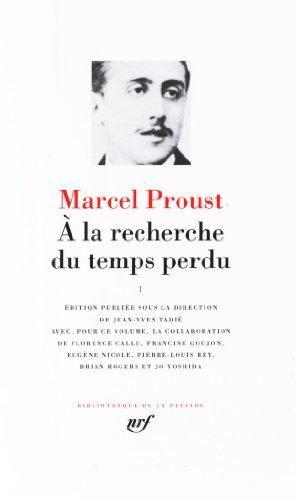lingua French
Proust : A la recherche du temps perdu, tome 1
In Search of Lost Time (French: À la recherche du temps perdu), first translated into English as Remembrance of Things Past, and sometimes referred to in French as La Recherche (The Search), is a novel in seven volumes by French author Marcel Proust. This early 20th-century work is his most prominent, known both for its length and its theme of involuntary memory. The most famous example of this is the "episode of the madeleine", which occurs early in the first volume. The novel gained fame in English in translations by C. K. Scott Moncrieff and Terence Kilmartin as Remembrance of Things Past, but the title In Search of Lost Time, a literal rendering of the French, became ascendant after D. J. Enright adopted it for his revised translation published in 1992. In Search of Lost Time follows the narrator's recollections of childhood and experiences into adulthood in the late 19th-century …
In Search of Lost Time (French: À la recherche du temps perdu), first translated into English as Remembrance of Things Past, and sometimes referred to in French as La Recherche (The Search), is a novel in seven volumes by French author Marcel Proust. This early 20th-century work is his most prominent, known both for its length and its theme of involuntary memory. The most famous example of this is the "episode of the madeleine", which occurs early in the first volume. The novel gained fame in English in translations by C. K. Scott Moncrieff and Terence Kilmartin as Remembrance of Things Past, but the title In Search of Lost Time, a literal rendering of the French, became ascendant after D. J. Enright adopted it for his revised translation published in 1992. In Search of Lost Time follows the narrator's recollections of childhood and experiences into adulthood in the late 19th-century and early 20th-century high-society France, while reflecting on the loss of time and lack of meaning in the world. The novel began to take shape in 1909. Proust continued to work on it until his final illness in the autumn of 1922 forced him to break off. Proust established the structure early on, but even after volumes were initially finished, he continued to add new material and edited one volume after another for publication. The last three of the seven volumes contain oversights and fragmentary or unpolished passages, as they existed only in draft form at the death of the author; the publication of these parts was overseen by his brother Robert. The work was published in France between 1913 and 1927. Proust paid for the publication of the first volume (by the Grasset publishing house) after it had been turned down by leading editors who had been offered the manuscript in longhand. Many of its ideas, motifs and scenes were anticipated in Proust's unfinished novel Jean Santeuil (1896–1899), though the perspective and treatment there are different, and in his unfinished hybrid of philosophical essay and story, Contre Sainte-Beuve (1908–09). The novel had great influence on twentieth-century literature; some writers have sought to emulate it, others to parody it. For the centenary of the French publication of the novel's first volume, American author Edmund White pronounced In Search of Lost Time "the most respected novel of the twentieth century."
